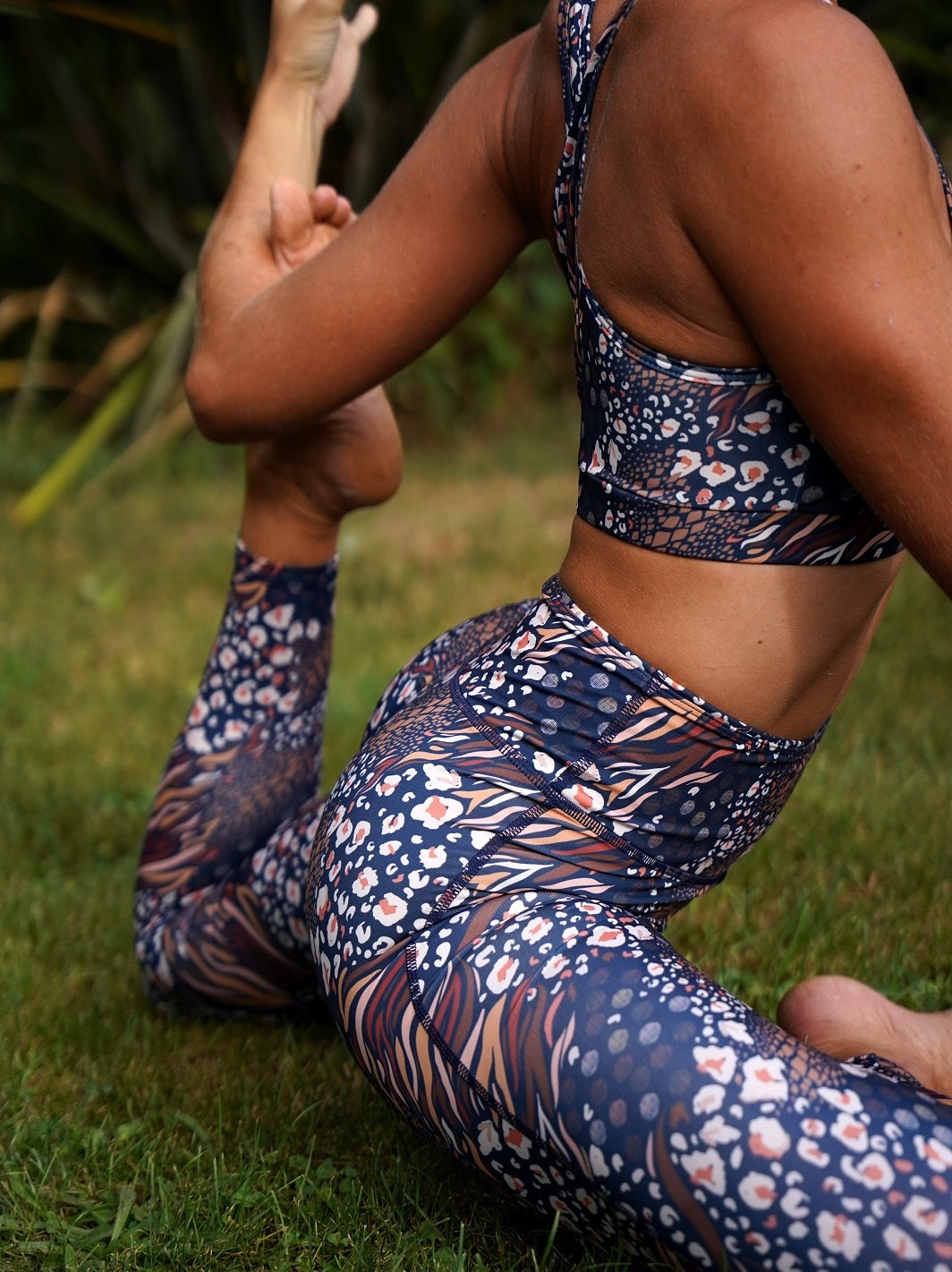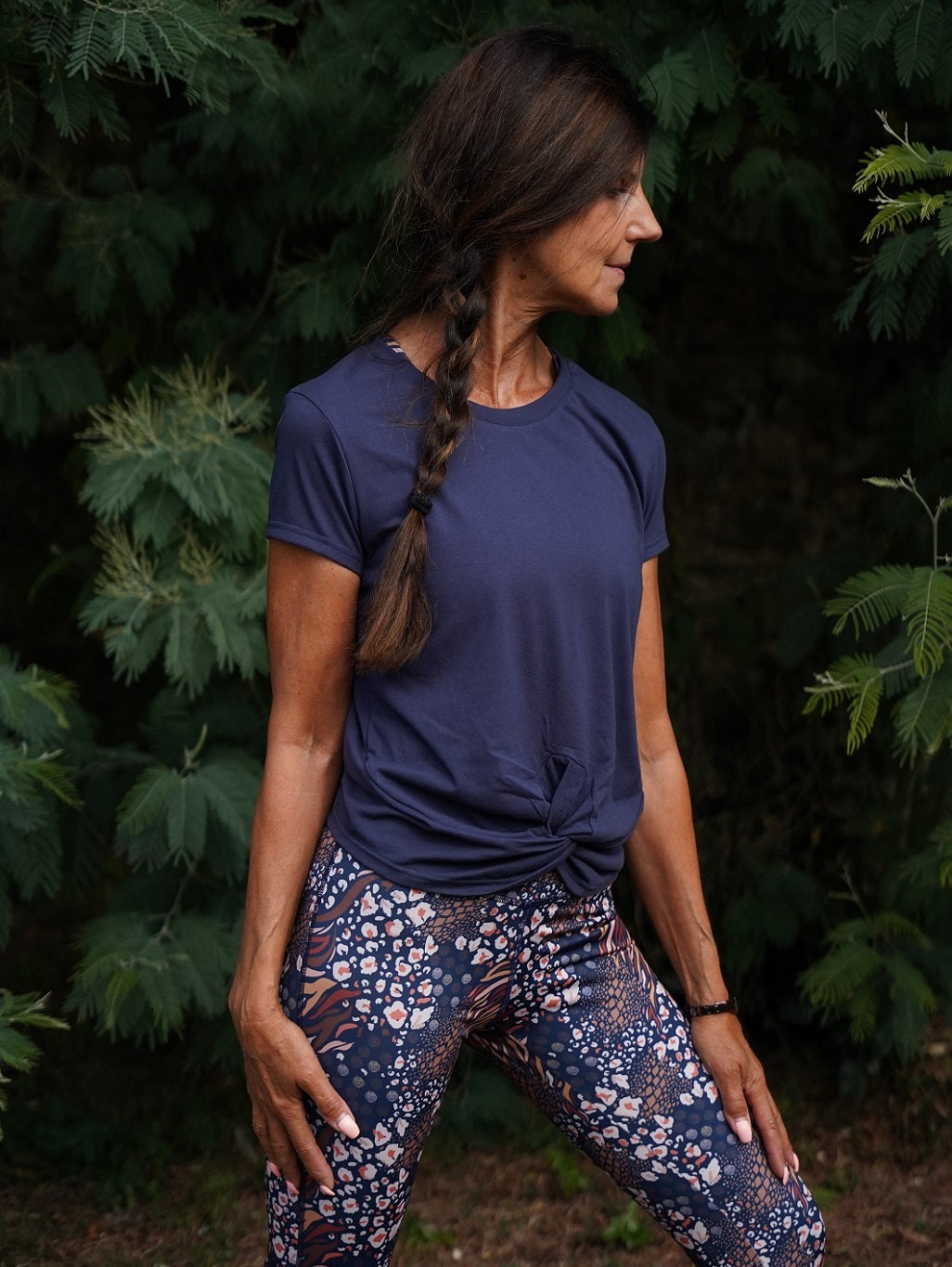Did you love 7 Families games as a child? Do you like sorting, tidying, organizing and have you been caught red-handed putting glasses in parallel in the kitchen cupboard?
You like things tidy and you will like this post!
There are 5 main families of yoga postures that we will review in a moment. It's time to serve yourself that nice little cup of chai latte that you've been dreaming of since this morning.
Despite their great diversity, a few basic principles apply to all asanas.
Starting with conscious breathing. Each yoga posture is punctuated by the breath which is done through the nose and not through the mouth. Deep abdominal breathing will be required to circulate vital energy.
Ideally, we practice on an empty stomach, at least 2 hours after the last meal. That little cereal bar that catches your eye will have to wait until the end of your session :-)
To make the most of the benefits of a posture and of yoga more generally, you will pay particular attention to the correct positioning of your body. Is your knee well above (not in front of) your ankle like a warrior? Perfect, you will get along well with BKS Iyengar, the creator of the eponymous style of yoga, precisely based on alignment.
The combination of the 5 types of postures produces the most emblematic asanas of the discipline such as the Head Pose or balanced inversion and the Wide Angle Reversed or forward twisting stretch. Something to vary the pleasures for all tastes!
Motivated to practice yoga every day? Here are our tips!
1. Forward Stretches
Definition : A forward stretch (also called flexion) is a posture where the torso is projected toward the front of the body. The torso can remain vertical or bend to meet the feet.
Benefits : Forward stretches are the best friend of people who spend a lot of time sitting. Stretching and activating the hamstring muscles, stretching helps us release tension accumulated in our back and in our mind.
Little technical advice : Direct your breath toward where you feel tension in the muscles to release even more deeply.
When to do stretching? : During all your yoga sessions and even outside (discreetly in your office), in all situations and as often as you need.
Contraindications : none in particular except those of yoga in general.
Our favorite forward stretch: The Stork or Uttasana for a delicious spinal stretch

2. Twists
Definition : A twist is an asana during which the spine rotates around its axis. It also mobilizes the rib cage and the neck. Twists are usually done while lying, sitting or standing, and even inverted!
Benefits : Your back loves the twists that lengthen and soften the spine. Excellent for the digestive system, twisting yoga postures offer your abdomen a good time to relax and relieve tension, which would have the effect of accelerating the transit and flow of blood to the intestines. And its effects on the mind? The twists would help to digest the emotions…
A little technical advice : A twist always starts from the right side (by which we mean we turn to the right side first) to respect intestinal peristalsis, that is to say the direction of muscular contractions during digestion.
When to practice twists? : All year round, they are accessible to the most novice among us. You can redouble your twists, especially after the holidays or when the seasons change, to benefit from their benefits mentioned above.
Contraindications : pregnant women and those prone to hernias and other back problems, refrain!
Our favorite twist : The Ground Twist or Jathara Parivartanasana, for its immediate relaxing effect.

3. Inversions
Definition : A highlight of a yoga session when combined with balance, an inversion is a yoga posture in which the heart, pelvis or feet are above the heart. Technically, downward facing dog is indeed an inversion. A more accessible and less intimidating alternative to its cousin, the famous and photogenic head pose.
Benefits : Inversions strengthen the upper part of the body which are the arms, chest and neck. Real acrobatics for some, they promote good blood circulation and irrigation of the brain. As for their effects on our concentration and our self-confidence, they are innumerable!
Little technical advice : certain inversions such as Head Pose or Scorpion Pose are very technical and only a yoga teacher will be able to guide you calmly step by step in their implementation.
When to practice twists? : Twists are ideal for a boost in morale and the body when you feel tired or slightly unmotivated.
Contraindications : Some teachers are categorical, others more flexible. You should not practice inversions when you are on your period, as they go against the body's elimination process. On this subject, we remain neutral. Furthermore, people with heart or eye diseases are asked to take their turn.
Our favorite inversion : The Candle or Sarvangasana, for its stimulating effect

4. Backward Stretches
Definition : A backward stretch (or bend) is an asana in which we stretch the front of the body by arching the back. A family of asanas intended to cure the ailment of the century: the slumped posture to which we all tend to succumb while surfing the web.
Benefits : Like forward stretches, backward bends encourage us to properly lengthen our spine while working the muscles of the abdomen and shoulders. This family of postures pushes us to completely let go by opening ourselves to the unknown. The reward ? An instant renewal of our motivation and energy!
Little technical advice : Unless you are a prima ballerina, it is not recommended to “force” your arch in backward flexion at the risk of seriously hurting your back. Before you tackle your first backward stretch, let's warm up, warm up, warm up! And once finished, we gently exit the posture before continuing with the next one, especially if it is a forward bend. Your neck will thank you.
When to do backward stretches? : Backward stretches should be reserved in the middle of the session to allow the body to prepare for them.
Contraindications : to be avoided at all costs during serious injuries to the back, neck or shoulders, or in the event of a blood pressure problem.
Our favorite backward stretch : The Camel to open our hearts, literally and metaphorically. Are you starting yoga? Use blocks to achieve this posture.

5. Balances
Definitions : As its name lets us guess, a balance is a yoga posture where we support ourselves on one foot, on the toes, on the head or even the hands, arms or forearms.
Benefits : Practiced regularly, balance strengthens us physically and morally. To keep our center of gravity away from the dangers of falling, our concentration and our presence to ourselves will sharpen over time, until they become unshakeable!
Little technical advice : To get into a balanced posture and be able to maintain it, make sure your alignment is perfect. Calmly lean on one limb to “validate your balance” before lifting the rest of the body.
When to practice balances? : Preferably when you are fresh and ready, to avoid hurting yourself.
Contraindications : none in particular, except that you should be in great shape to take on the challenge!
Our favorite balance : Warrior III or Virabhadrasana III which helps us strengthen our attention, or the tree pose

And you, what is your favorite yoga posture family? Tell us in the comments :-)
To find out more about the different types of yoga, click here!
Discover here our eco-responsible yoga outfits made in France from recycled materials!
And so you don't miss any Géopélie news, subscribe to our newsletter here at the bottom of the page 👇 we only send a maximum of two per month!
Photo credits :
- Fizkes
- UvGroup
- Rishikesh yogpeeth





Leave a comment